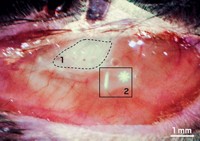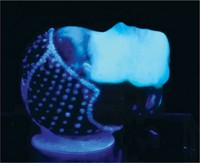Advertisement
Grab your lab coat. Let's get started
Welcome!
Welcome!
Create an account below to get 6 C&EN articles per month, receive newsletters and more - all free.
It seems this is your first time logging in online. Please enter the following information to continue.
As an ACS member you automatically get access to this site. All we need is few more details to create your reading experience.
Not you? Sign in with a different account.
Not you? Sign in with a different account.
ERROR 1
ERROR 1
ERROR 2
ERROR 2
ERROR 2
ERROR 2
ERROR 2
Password and Confirm password must match.
If you have an ACS member number, please enter it here so we can link this account to your membership. (optional)
ERROR 2
ACS values your privacy. By submitting your information, you are gaining access to C&EN and subscribing to our weekly newsletter. We use the information you provide to make your reading experience better, and we will never sell your data to third party members.
Materials
Light-activated hydrogel might one day repair degraded cartilage in arthritic joints
Researchers reinforce cow cartilage with polymeric system
by Stu Borman
March 14, 2016
| A version of this story appeared in
Volume 94, Issue 11

A collaborative chemistry and orthopedics team has developed a technique that, if verified in animal and human tests, might one day be a therapy for osteoarthritis.
In osteoarthritis, joint cartilage loses some of its glycosaminoglycans, highly charged polysaccharides that enable the tissue to retain water, giving it load-bearing capacity and an ability to resist compression and wear. The result is joint pain, for which no direct treatment is currently available.
Now, chemist and biomedical engineer Mark W. Grinstaff and coworkers at Boston University, in collaboration with orthopedists at Beth Israel Deaconess Medical Center, have devised a method for polymerizing a restorative charged hydrogel network inside damaged cartilage (Angew. Chem. Int. Ed. 2016, DOI: 10.1002/anie.201511767). Researchers have used hydrogels and polymers to strengthen tissues before, but only at surfaces, not throughout tissues, as in this study.
Grinstaff and coworkers soaked cow cartilage with a mixture of 2-methacryloyloxyethyl phosphorylcholine, which absorbs water and resists compression; ethylene glycol dimethacrylate, a cross-linking agent; and photoinitiating reagents. They then used an optical fiber to irradiate the tissue with green laser light. The light triggered the photoinitiating reagent to jump-start a cross-linking polymerization reaction throughout the tissue.
The resulting double network of synthetic and natural components attracts water and improves compressive strength and wear resistance to levels similar to those of healthy cartilage, the team found.
Andrew P. Dove of the University of Warwick, a specialist in degradable biomaterials and sustainable polymers, comments that the use of a biological matrix in a double network is “an exciting new approach that has huge potential.” Initiation by green light, which doesn’t penetrate tissue well, might not be ideal for real-world use, he says, but the team should be able to modify its system to work with other types of light or other types of initiators.





Join the conversation
Contact the reporter
Submit a Letter to the Editor for publication
Engage with us on Twitter